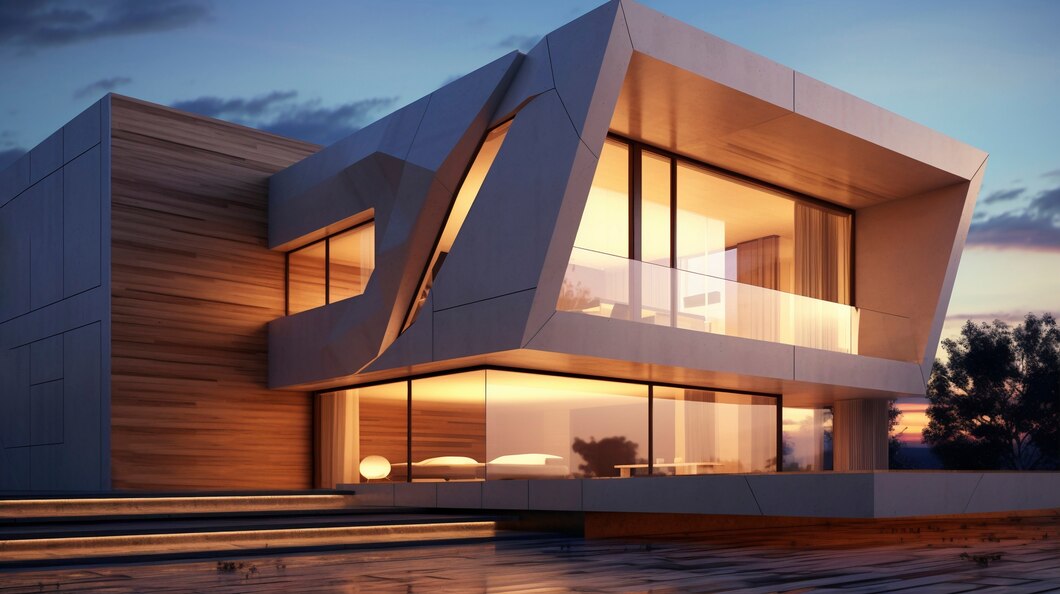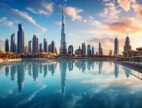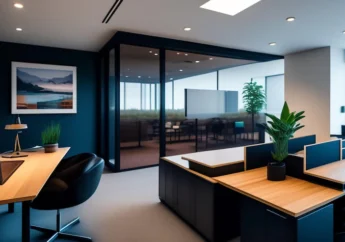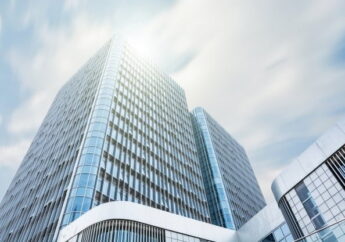How Light Can Transform 3D Renders Of Your Property?
by Nabamita Sinha Real Estate Published on: 13 January 2024 Last Updated on: 18 June 2024

Lighting is one of the most important elements for creating realistic and appealing 3D-rendered scenes. The interplay between light sources, materials, and the environment has a huge impact on the final look, mood, and quality of a 3D render.
Getting the lighting right can be the difference between a CGI image that looks believable and integrated, versus one that looks synthetic or jarring.
What does it mean for you, if you’re a commercial property owner?
Of all businesses, lighting can have the broadest impact on QSRs. Of late, many Americans love to hang out at QSR joints.
In a survey, 29% of US citizens revealed that they can’t handle the craving of eating at QSR joints at least once a week.
Thinking how lighting can be related to sales of your fav QSR joints?
FYI, I’m not off track. Our mission here is to discuss how 3D renders of SQR joints attract more customers.
In real-time and pre-rendered 3D graphics, there are a variety of techniques available for simulating lighting. But I’ll highlight the lighting simulations that QSR joints mostly flaunt:
Local Lighting
Local lights are isolated light sources that directly illuminate nearby surfaces in a scene. They emulate real-world lights and behave independently from the rest of the lighting environment.
The three main types of local lights are:
- Point Lights – Omnidirectional light emitted from a single point, like a light bulb. Light intensity diminishes based on distance from the point. Useful for lamps, car headlights, etc.
- Spotlights – Directional cone of light originating from a point, like a flashlight. Can control the angle of the cone and intensity falloff at the edges. Good for mimicking spotlights.
- Directional Lights – Parallel rays of light coming from a distant source, like the sun. Intensity is uniform regardless of distance. However, the main use is to Mimic distant sunlight or moonlight, in a theme-based restaurant.
Local lighting is fundamental to 3D rendering scenes. It establishes forms, casts shadows to give objects depth and shape, and sets the tone. Point and spotlights are more realistic as their intensity falls off with distance. Directional lights are more simplistic and uniform.
Global Illumination
Global illumination is a group of techniques used in 3D graphics to simulate the complex ways that light bounces around a scene. It takes into account not just direct light from sources, but how light interreflects on different objects and surfaces. The key effects made possible by global illumination include:
- Indirect Lighting – Surfaces illuminated by bounced light rather than direct light sources. This fills in shadowed areas and corners, making lighting more natural.
- Color Bleeding – Surfaces reflecting the colors of other nearby surfaces. For example, a red wall reflects onto a white wall near it.
- Caustics – Focused points of light that occur when light concentrates after reflecting or refracting. Seen often as shimmering water caustics at the bottom of a pool.
- Realistic Shadows – Accounts for light bleeding into shadowed areas and penumbras from partial occlusion. Eliminates harsh shadow cutoffs.
Global illumination unifies the lighting of a whole scene. But some techniques like ray tracing, radiosity, photon mapping, and irradiance caching can really work wonders. Producing global illumination effects can be computationally heavy, often requiring pre-calculation.
Last month, I paid a visit to Yoshinoya. It’s Japanese themed QSR in the US.
Luckily, a karaoke event was going on. But it was an opportunity for me to witness how indirect lighting and color bleeding works.
Image-based Lighting
Image-based lighting (IBL) is a technique for realistic lighting and reflections that uses high dynamic range (HDR) images captured from the real world. It allows artists from 3D rendering companies to base the lighting of their CGI scenes on real-world environments.
The Process Involves:
- Capturing HDR photos of a real-world environment using a special HDR camera rig. This captures lighting details not visible in standard images.
- Converting the HDR photos into lighting maps like reflection cube maps, irradiance maps, and sky maps. Importing these maps into 3D software and using them to light and reflect on CGI models and scenes.
IBL provides very realistic ambient lighting, reflections, and indirect illumination. Using a sky map for the distant background, reflection cube maps for mirror-like reflections, and irradiance maps for diffuse lighting.
Since the image-based lighting comes from real environments, the consistency and accuracy of the lighting are very high. This grounds even CGI models in realism. The environments can be captured to match the desired mood and lighting style.
IBL does have some limitations. It usually requires manually captured environments vs procedurally generated lighting. Extremely complex specular materials may require tweaking to look right under IBL. But overall, it provides unparalleled realism compared to purely simulated lighting.
Dynamic Lighting
Dynamic lighting refers to lighting that can change and move during an animated scene, as opposed to being baked in. This allows the lighting to respond to events, simulate real-time changes, and alter the mood of a scene.
I’ve seen many times that restaurants use such lighting during any live event. Last day, there was an event at Hard Rock Cafe. There I certainly saw some exquisite flickering lights.
Well, there are various categories of dynamic lighting. But I’ll discuss some of these lighting techniques, that QSRs use frequently.
Some examples of dynamic lighting include:
- Moving Light Sources – Lights that move, rotate, or travel through an environment, casting light and shadows in changing patterns. Like a flashlight beam moving along a wall.
- Flickering Lights – Simulating bulbs that flicker, surge, or burst can increase realism. Reference video footage to match realistic irregular patterns.
- Day/night Cycles – Rotating directional lights to simulate the passage of time from day to night. Sunrise and sunset provide dramatic lighting changes.
- Muzzle Flashes/Explosions – Quick bursts of bright flashing lights to punctuate action beats and explosions. Reference real-world footage for accurate lighting intensity and color.
- Environment Reactions – Lights that automatically react to things like bullets hitting, fires starting, lightning strikes, etc. to heighten the drama.
- Parametric/Procedural Lights – Lights generated procedurally and modulated by parameters like sound, vibration, speed, etc. Allows infinite variation.
The key to believable dynamic lighting is respecting physics and how lights would realistically behave. Avoid arbitrary or unrealistic changes for purely stylistic reasons – ground dynamic lighting in logical motivations for the best realism.
Volumetric Lighting
Volumetric lighting refers to lighting techniques that simulate the way light scatters and beams through participating media in the air and atmosphere. It adds depth, texture, and realism to scenes by showing how light interacts with fog, smoke, dust, and other atmospheric effects.
Some common volumetric lighting effects include:
- Crepuscular Rays – Beams of light filtering through clouds, trees, or windows. Also known as “god rays.”
- Fog and Dust – Directional beams or cones of light shining through fog or particle effects. Scattering occurs based on density.
- Atmospheric Haze – Light dimming and taking on bluer tones at a distance to simulate air’s effect over large spaces.
- Clouds – Bright, diffuse lighting and shadows within sculpted 3D cloud formations.
- Light Shafts – Columns of light visible when bright light sources intersect floating particles.
Volumetric lighting effects can be costly to calculate. Often they are pre-rendered and used as 2D textures or with tricks like light probes. But when done well, they add drama, realism, and visual interest to both realistic and stylized 3D scenes. Ray marching through dense voxel grids can capture finer effects.
Main Takeaways for Your Restaurant
So far, we have seen that lighting can elevate the aesthetics of a property in many ways.
Are the same technologies effective in QSR outlets too?
Setting the Right Mood
The decor of your outlets dictates the mood of your customers to a great extent. If I step in an outlet and feel retracted by the color and brightness of the place, I’m done with it.
I know it’s the same for most of you.
To evade any such circumstances, most SQRs use tactical lighting.
Let me explain how the same can elevate their 3D renders.
For instance, I have seen clever ambient lighting in many Starbucks outlets.
They use point lights with contrasting dark lighting. As a result, you are compelled to retain a constant focus on your food.
At the same time, this lighting combination creates caustics on white cutlery.
Not only does it make your dining experience posh, but also helps to avoid distractions from other sources too.
Impacts the Duration of Customer Visit
As a restaurant owner, you will always want your customers to stay longer.
The longer they stay, bigger will be the bill.
By now you’ve cracked the deal surely!
Ambient lighting can mesmerize your customers and make them stay longer. But how’s it done?
I visited a Taco Bell outlet yesterday and noticed a lighting trick. And I can call it a perfect example of luring customers to brood over their food, for longer.
I must say Taco Bell did a great job of image-based lighting. They used HDR images of real people having tacos. But the lighting technique was drawing attention to their newly launched combos mainly.
Maybe they saw people who ordered meal combos stayed longer.
Conclusion
In conclusion, lighting is a foundational aspect of crafting realistic and appealing 3D-rendered scenes. The various techniques for simulating lighting effects each have their own essence in QSRs. Local lights provide direct illumination, while global illumination creates realistic bounce lighting. Depending on your restaurant’s theme, you can use these lightings vividly.
Image-based lighting leverages real-world environments for accuracy, and dynamic lighting enhances animations and mood. Volumetric effects add depth and interest. As a result, you can keep your customers caught up for a long time.
By thoughtfully combining the right lighting techniques, 3D artists can bring their scenes to life. With this, they can establish the desired aesthetic and atmosphere. It also helps them to enhance the believability of the final rendered imagery. Proper use of light in CGI is key for transporting customers into the scene and suspending distractions.
Read Also:



































































































